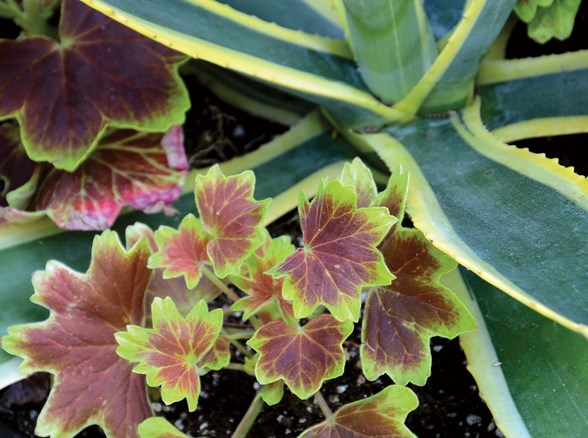Lengthening days and warmer nights remind us that late May is the time to plant flowering annuals to provide colour in the summer garden.
Even though the weather is warming up, gardeners above the Upper Levels Highway should still take care to avoid late frost damage when deciding to plant annuals. Gardeners living below the highway, or those living down near the waterfront, may have already started to plant annuals because their gardens are warmed by the moderating effect of the ocean making it possible to plant earlier than is possible for gardeners at higher elevations.
Few plants can provide the colourful exuberance that annuals do, especially in containers and mass bedding displays. The most common question about annuals is which species to choose and where to plant them. As always, choose the right plant for the right place, not the plant you want in the wrong place. Sun-loving annuals, such as cosmos, snapdragons and salvia, require full sun exposure to flower happily during summer. Shade-tolerant annuals, like impatiens and fibrous or tuberous begonias, will bloom in the shade but there are limits to their tolerance of the degree of darkness. As for which specific plants to choose, that is entirely a matter of individual taste and emotional response. So you'll have to figure it out.
When it comes to designing with annuals try to use plants of varying heights to create frothy flowering layers in containers or beds. Layering can also be used to integrate annuals into existing beds to fill in missing layers or to add to existing plant layers to provide colour. If the plant layers in existing beds are already full then plant at the front of the bed to set off the rest of the plants. Creating small or large vignettes amongst existing plantings is another way to create interest and colour drama in the garden. Even a few tall sunflowers for the kids or some exotic-looking cleome dotted hither and yon can add interest to the garden. For those on a limited budget, focus your efforts near the front door, around outdoor living areas or in pots on the balcony to achieve the maximum colour value for your dollar.
Deciding how to use colourful annuals in the garden is not difficult; just with existing plants and don't worry so much about the colour of the house. the supposed rules. Many So choose accordingly and people focus too heavily on apply colour in garden areas the colour wheel and the that have the most resonance interactions of colour, hue with your daily life. There and tone when choosing are some easy colour annuals. Knowing how combinations that provide colours interact is useful, vibrant displays, such as but it's not the point. Using silver or grey dusty miller colour is about being moved with orange gazanias, which emotionally or spiritually. It's produce an eye-catching also important to harmonize display. Or a pale blue the colour of bedding plants ageratum backed by deeper blue salvia for a quieter, more subtle display. If you're having trouble choosing colour combinations, try mixing and matching colours while you're in the garden centre to see what colour combos you like before you buy.
For bedding displays to produce a profuse, preponderance of bloom, good maintenance is needed throughout the season. As always people make this task more complicated than it is. I recommend against fertilizing at planting time. Wait a week or so for the new plants to root into the soil to allow time for soil to root contact to occur, which is necessary for nutrient uptake, then apply a low dose of fertilizer if you feel the need to feed. I prefer to amend my planting locations with compost or well-rotted animal manure before planting. Most annuals do not like overly rich soil or excessive fertilizer because those factors force soft pest-prone leaf growth at the expense of flowers. Leanness can be good for the goose so to speak. Annuals should also be lightly mulched to protect their delicate roots from drying. And water once every week during the heat, applying enough water to penetrate into the soil to the bottom of the root zone to keep annuals flowering happily.
The best piece of advice I can offer about growing annuals is to try something new every season. Move yourself out of your comfort zone and try new species, new designs or planting in new places in the garden. The task may be challenging but it will stretch your growing skills and reward you with a cascade of colour all summer long.
Todd Major is a journeyman horticulturist, garden designer and builder, teacher and organic advocate. [email protected]



